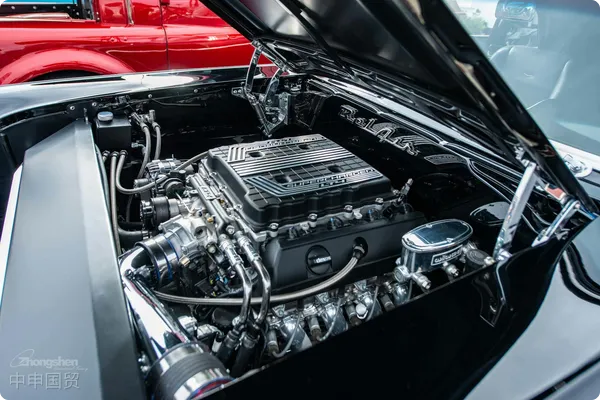- Shanghai Zhongshen International Trade Co., Ltd. - Two decades of trade agency expertise.
- Service Hotline: 139 1787 2118

Professional Guide: How to Choose a ReliableAutomotive partsImport RepresentationCustoms Broker? 20 Years of Industry Experience In-Depth Advice
Author: Seniorforeign tradeservice expert with 20 years of industry experience, this article will systematically analyze the core points of clothingExport RepresentationAccount Manager
Professional Background: 20 Years of Global Supply Chain Service Experience
Contents
ToggleI. Industry Specifics of Auto Parts Import and the Value of Agency Services
Auto parts import is one of the most specialized categories in foreign trade, with complexities reflected in:
1.Complex product attributes: Involving multiple HS code classifications (e.g., mechanical, chemical, metal - tariff differences under 8708 items can exceed 15%);
2.Dense compliance risks:3C23 categories of regulatory requirements including certifications, energy efficiency labels, and environmental approvals;
3.Supply Chain Timeliness Sensitivity: OEM production line stoppages can incur losses of tens of thousands USD per minute, with customs delays causing full-chain contract breaches.
The core value of professional customs brokers lies in theirend-to-end risk control models(e.g., HS code intelligent pre-classification systems) andIndustry - specific solutions, helping enterprises reduce 15%-30% of total import costs.
II. Six Key Dimensions for Selecting High-Quality Auto Parts Import Agencies
1.Customs AEO Advanced Certification qualification
- Mandatory requirement: AEO Advanced Enterprise certified by Customs (70% reduction in inspection rates)
- Pitfall avoidance: Beware of small agencies subcontracting with borrowed credentials
2.Automotive industry-specific database
- Benchmark enterprise feature: Maintains database of 20,000+ auto parts parameters (material/power/usage precisely matched to HS codes)
- Case Reference: A German transmission importer avoided RMB 876,000 in misclassification penalties through database comparison
3.Global Port Service Network
- Core Competency: Proprietary operations teams stationed at Tianjin Port (parallel auto parts hub), Shanghai Waigaoqiao (primary ECU chip port), and Guangzhou Nansha (Japan-Korea parts distribution center)
- Performance Metric: 48-hour exception resolution at major ports
4.Customs Compliance Management System
- Essential Features:
- Origin Rule Optimization (e.g., reducing transmission tariffs from 10% to 6% under RCEP)
- Pre-valuation Dispute Resolution (for high-value components like engines)
- Intelligent IPPC Mark Verification System for wood packaging
5.Emergency response mechanism
- Tier Standards:
- Grade A: Professional auto parts emergency team ≥10 members (3C exemption certificate reissue within ≤3 working days)
- Grade B: Basic customs clearance services only
6.Supply Chain Visibility System
- Industry Standard: Must include digital functions like order tracking, duty estimation, and certificate expiry alerts
- Innovation Case: A top-tier agency implemented blockchain for end-to-end traceability of Mercedes parts from German factory to Chinese 4S stores
III. 2023 Recommended Agencies In-Depth Analysis (Based on Real Service Data)
TOP1 COSCOMaritime TransportationInternational Logistics Customs Clearance
- Core advantages:
- Sole state-owned agent simultaneously serving Tesla, Bosch, and ZF
- Proprietary AI Auto Parts Classification System (99.2% accuracy)
- Tianjin Port Dedicated Auto Parts Inspection Warehouse (50% faster clearance)
TOP2 Sinotrans-DHL Supply Chain
- Specialized services:
- EU EPR Regulation Compliance Service (addressing 2023 updates)
- Auto Anti-dumping Duty Early Warning System (e.g., for Mexican suspension components)
TOP3 Huamao Supply Chain Technology
- Innovation Highlights:
- The nation's first auto parts "classification dispute insurance" (covering customs fines)
- VIN Smart Matching System (automatic vehicle-part data linkage)
IV. Industry Warnings: Three High-Risk Pitfalls in Auto Parts Import
1.Low - price trap:Agents offering quotes 20% below market prices often engage in "tax-inclusive" smuggling. A Zhejiang-based company was consequently required to pay back taxes and fines totaling 8.3 million yuan.
2.Certificate Traps: Non-specialized agents providing fake ECE certifications caused 2,000 brake pad shipments to be rejected
3.Logistics Traps: ECU module damage claims due to non-temperature-controlled container transport
V. Decision-Making Advice: Four-Step Selection Methodology for Enterprises
1.Needs Assessment: Sort product list (distinguish OEM parts/aftermarket parts), annual import volume, supply chain pain points
2.Capability verification: Require submission of customs clearance records for similar auto parts in the past two years (minimum 10 records)
3.Cost calculation: Compare base service fees + hidden costs (late declaration penalties, amendment fees, etc.)
4.Risk control: Sign the Special Auto Parts Service Agreement with clearly defined compensation clauses
Conclusion
The import of automotive parts is a technology-intensive systematic project. When selecting a professional agency, the principle of "30% price comparison, 70% efficiency evaluation" should be upheld. It is recommended that enterprises prioritize agencies with OEM service experience and automotive industry research teams, aiming to maximize supply chain value through establishing long-term strategic partnerships.
Authors declaration
This articles data comes from General Administration of Customs public information and industry service cases, containing no commercial promotion. Reprint must credit the author and professional background.
Related Recommendations
? 2025. All Rights Reserved. Shanghai ICP No. 2023007705-2  PSB Record: Shanghai No.31011502009912
PSB Record: Shanghai No.31011502009912









